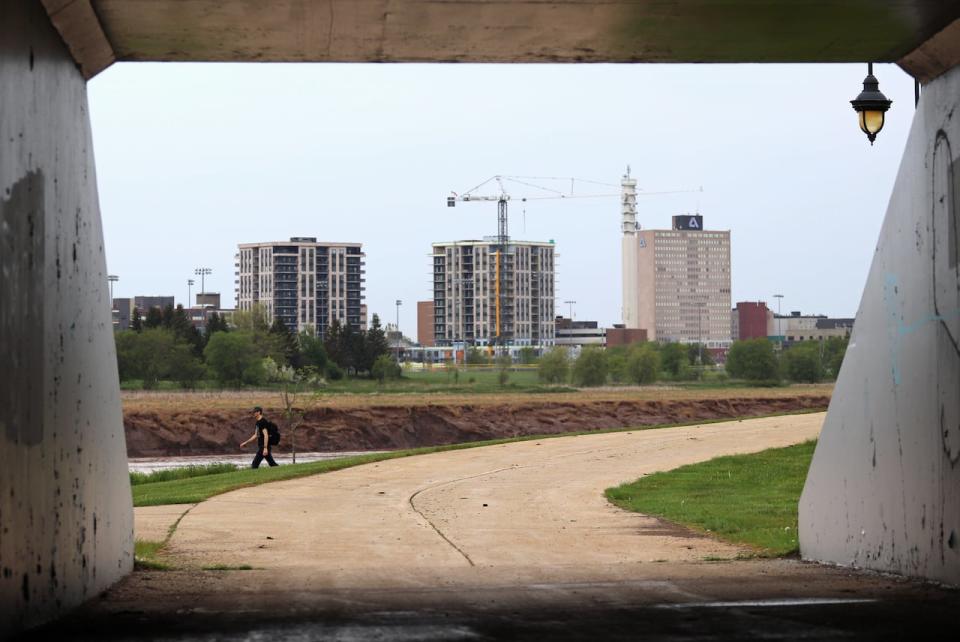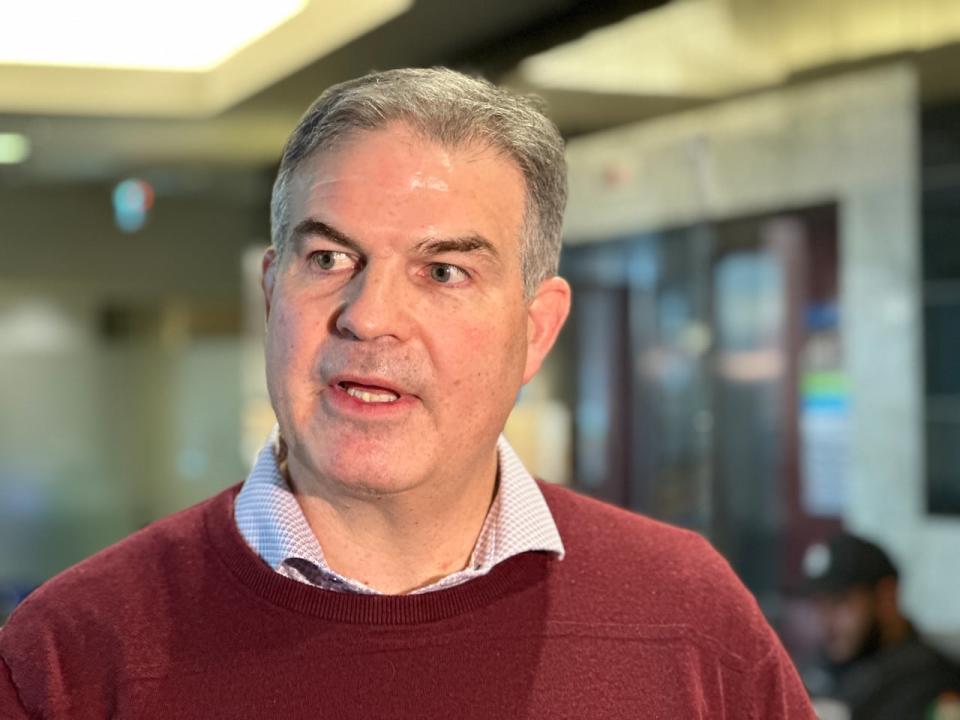Keeping up with Moncton's housing needs 'a good problem to have,' says urban economist
As Moncton deals with an unprecedented population boom, the city is left figuring out where to put everyone.
And that, said urban economist Yves Bourgeois, is a good problem to have.
"We have a good problem where people are moving into the region," said Bourgeois, the dean of social sciences and business at Mount Allison University.
"We need to figure out how to how to house them and how to build those developments."
Bourgeois also said it's not as simple as building a lot of new units. He said developers have to consider many other things, including affordability for families, avoiding urban sprawl and maintaining green space.
While New Brunswick's population growth over recent years has smashed records dating back to Confederation, the problem is particularly acute in the Moncton region.

The region, which includes Dieppe, Riverview and surrounding areas, has the second-fastest-growing metro population in the country, according to a recent Statistics Canada report.
That means development in Moncton is in high gear to try to keep up with the demand for housing.
Last week, Moncton council voted to sell city-owned land to a developer for a pair of 17-storey, mixed-use towers on the downtown riverfront. Earlier this month, Riverview council approved a rezoning application to allow for construction of two six-storey apartment buildings on Cleveland Avenue.
While such growth may be "off–putting to some people," Bourgeois said, "generally growth is good. I mean, New Brunswick's gone in 2008 to 2020 with virtually no growth in terms of population or economy. And with an aging population, we were going to have to pay the piper sooner or later."
Moncton's urban growth strategy
Earlier this year, Moncton adopted an urban growth strategy that calls for higher-density development, said Bill Budd, the city's director of planning and development.
He said the densification strategy is necessary because the city is projecting its population to grow by 35,000 over the next 25 years, requiring an additional 16,000 housing units.
The city is trying to concentrate 26 per cent of that new development in the downtown area in order to take advantage of existing infrastructure. Another 39 per cent is targeted for "infill areas along transit corridors" within already developed parts of the city.

Budd said there's a lot of "vacant or underutilized land" for development in these areas. He said it's particularly important to build along existing transit corridors, especially for students who need to travel to post-secondary institutions in the region.
The rest of the development, roughly 35 per cent, is proposed for "emerging growth areas" such as Vision Lands, said Budd.
He said densification "makes sense from a sustainable transportation perspective. We can't keep growing out." He said it makes much more sense to develop areas with existing amenities, infrastructure and services.
Building up rather than out
Bourgeois said it makes sense to build up rather than out for a number of reasons.
First, there's only so much land available, and some of it has to be preserved to retain green space.
Sometimes, said Bourgeois, losing green space is "just unavoidable," but sometimes those losses can be mitigated.
"So if you're going to cut some trees in one area that you're going to put them elsewhere."
In those situations, he said it's important to "incorporate green into the building design."
That could mean rooftop gardens or other green spaces built directly into the design plans.
Building up can also save money for residents, said Bourgeois. For example, with enough density of residents, municipalities can ensure the area is served by a bus route. That, he said, can eliminate the need for a vehicle.
"So you might be able to get by without one or you might be able to get by with just one for the household. And so that's a huge expense. You know, it's close to $15,000 a year for your average household."
He said it's critical for all cities to factor public transportation into new developments. Even the most "car-dependant cultures" are "investing heavily" in transportation systems.
"More and more, I think we are cognizant that … it's good for the environment, it's good for the wallet, it's good for the cities as well."
Bourgeois said the idea of the 15-minute city is catching on. That's where a person's daily needs are accessible within a 15-minute walk, bike or transit ride from their home.
One of the ways to do that, said Bourgeois, is to construct multi-use or mixed-use buildings.
The idea is to use the first floor — or the first couple of floors, for retail or business use.
"And so if we can incorporate some of these principles of the 15-minute city, transit-oriented development, we're going to do a better job at mitigating some of the negative effects that we've not done a good job in the past."


